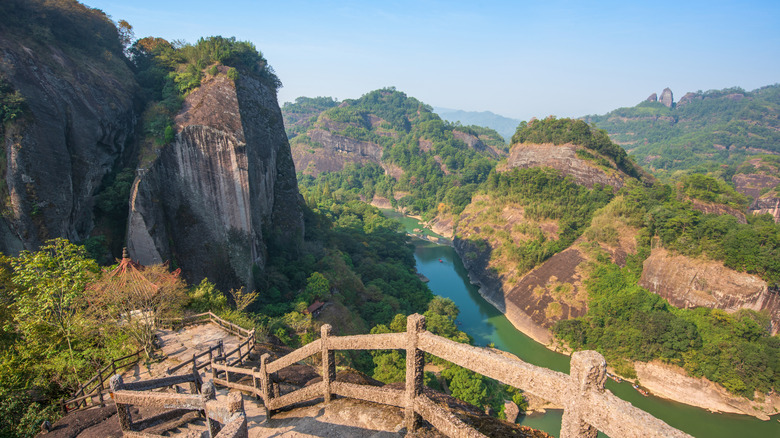The Country Known As The World's Largest Polluter Is Now Building The World's Largest National Park System
Every year, hundreds of millions of travelers pack their bags and hiking gear to explore national parks across the U.S. From Alaska's Denali National Park (which can be explored on a tight budget) to North Carolina's Great Smoky Mountains that brim with hikes and seclusion, the country's park system of more than 85 million acres is dedicated to preserving natural landscapes and protecting wildlife. Now, China is stepping into the spotlight with an ambitious plan to build the largest national park system in the world. Its goal is to safeguard biodiversity, preserve ecosystems, and show that conservation and tourism can go hand-in-hand.
Although China has a reputation as the world's largest polluter, it pledged in 2020 to reach carbon neutrality by 2060. In recent years, the government has made environmental moves and now aims to establish 49 national parks by 2035. China launched the first five in 2021. The parks combined cover more than 88,000 square miles of protected land that is home to almost 30 percent of the country's most important wildlife species. These include habitats for endangered big cats in the Northeast China Tiger and Leopard National Park, rare primates in the Hainan Tropical Rainforest National Park, and thousands of pandas in the Giant Panda National Park. Over the next decade, that footprint is expected to expand to more than 270 million acres across mountains, forests, wetlands, and deserts. If completed, China's network would be about three times the size of the entire U.S. National Park System.
China's national park system aims to protect biodiversity and bolster tourism
Since China created its first batch of national parks, wildlife populations have started to rebound. Tibetan antelopes increased from fewer than 20,000 in the 1980s to more than 70,000 today. Even the Hainan gibbons grew from 35 to 42, and wild leopards from 42 to 80. Officials credit much of this recovery to efforts focused on restoring natural ecosystems.
Each of China's initial five parks includes zones where development is banned and human activity is limited. However, there are surrounding buffer areas that allow tourists to spot rare species, including exploring panda habitats. For travelers used to the bustle of Beijing or Shanghai's unexpected attractions, these parks offer a glimpse of wilderness that few outsiders have experienced. Some areas that are under consideration for future parks include the Qinghai-Tibet Plateau, the Yellow River Basin, and the Yangtze River Basin.
According to the government, expanding the park system will help protect the country's biodiversity while opening new doors to tourism. Local communities are encouraged to take part in eco-friendly businesses and park management. Officials say locals are already seeing benefits from new jobs as park rangers and guides. In some parks, early initiatives like nature observation events and monitoring programs are showing how conservation and livelihoods can thrive together.

